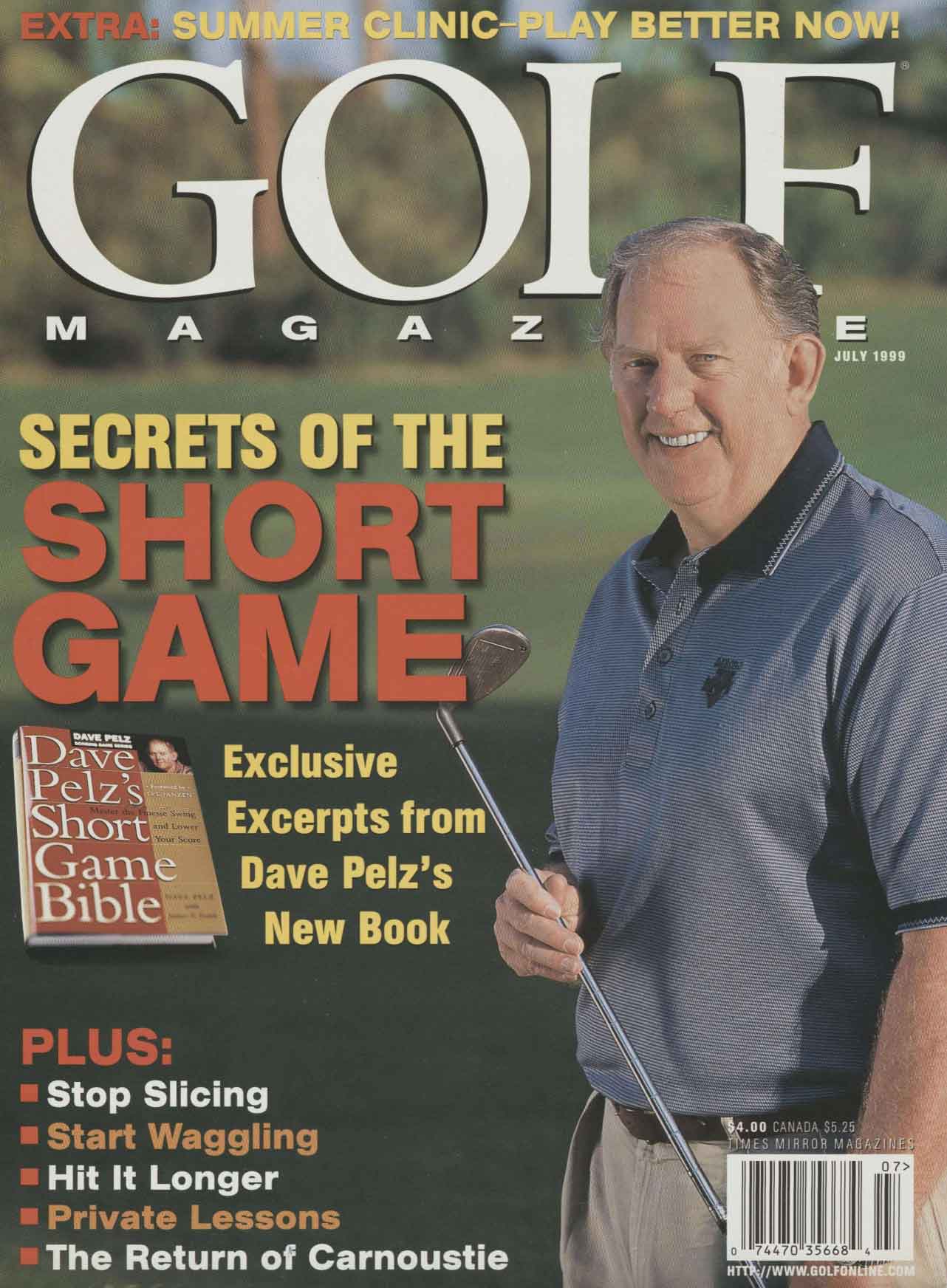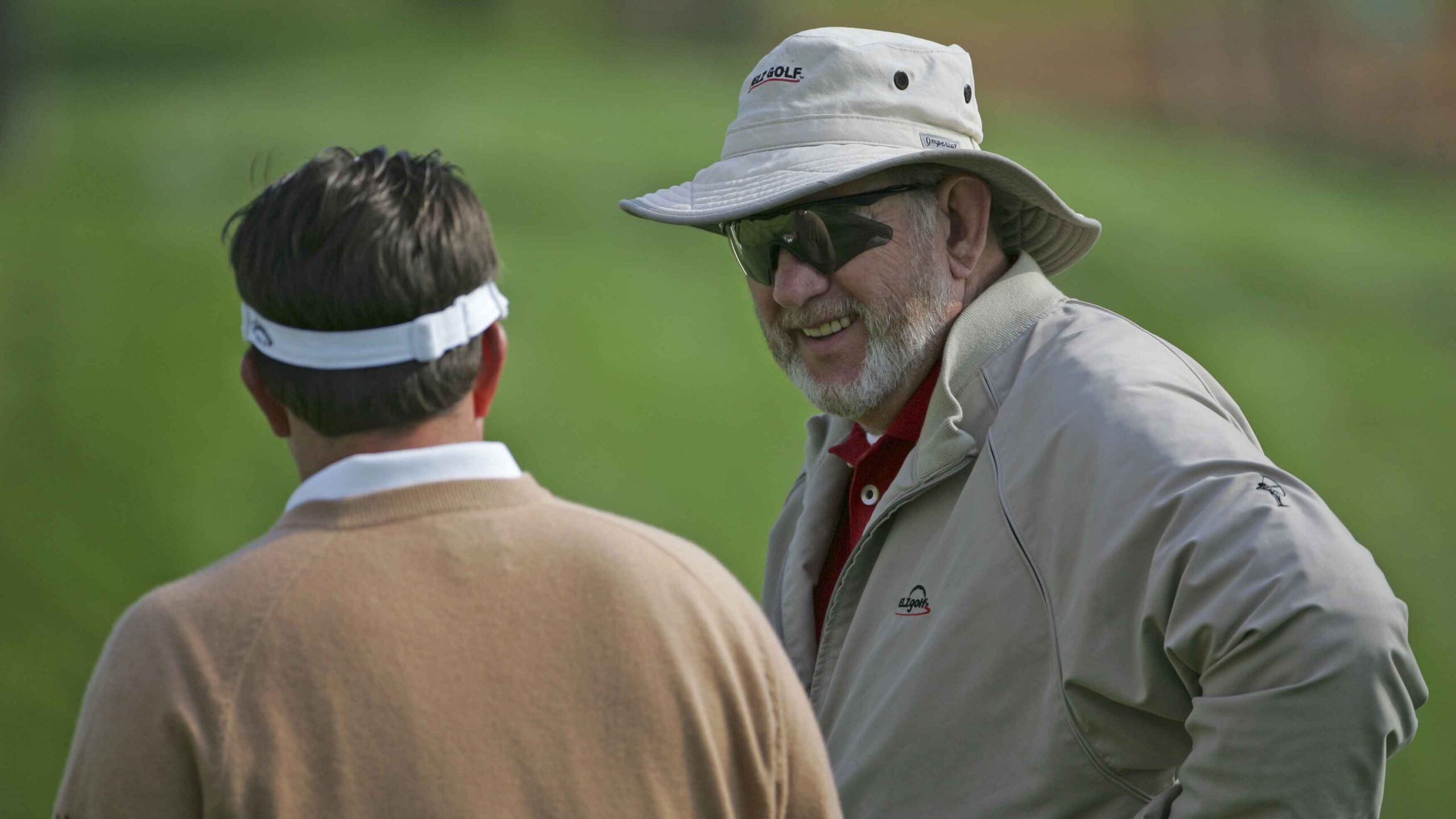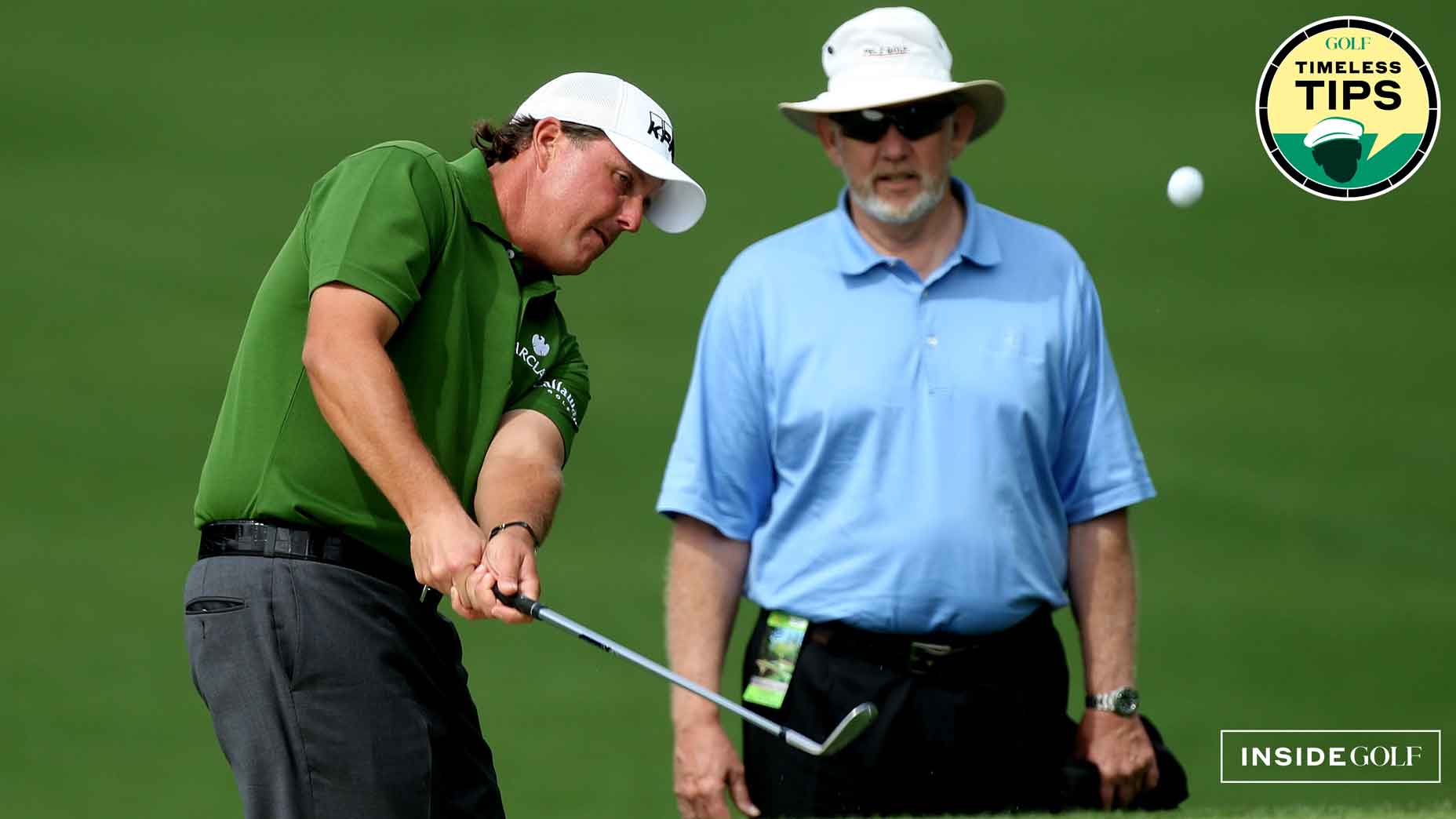There’s a yellow-lined notepad on my desk that’s home to my monthly GOLF publishing to-do list. For two years running one note failed to receive the strikethrough treatment: “Talk to Dave Pelz.” Despite my calls, e-mails and IMs, “DP,” as his friends and family called him, had gone quiet.
I knew he was sick. He had been battling the C-word. So, I didn’t press and instead sent prayers that he was on the mend. When the timing was right, DP would respond.
But he never did. On Wednesday morning I learned that Dave had died over the weekend. He was 85. I was gratified to learn that he was at his beloved home outside Austin, Texas, which he had built with his wife JoAnn (call sign: “JP”).
Dave Pelz’s contributions to the game were incalculable. They included the creation of innovative teaching aids; putter functionality that still exists in many models today; his introduction of the scientific method to elevate how teachers study swings and coach players; and orchestrating the development of a worldwide teaching network and brick-and-mortar schools that have helped thousands of recreational players improve their short games, to say nothing of the A-list students on his lesson docket with a combined 20 major victories among them.
“I owe so much of my success to the many things he taught me,” one of those pupils, Phil Mickelson, posted on social media Wednesday, “and he lives on as I share those same insights to numerous other golfers.”

I first met DP in 2006, my first year at GOLF, after uprooting from California to work for the best damn golf publication in the business. Upon settling in Midtown Manhattan, just a few blocks north from our then-office, my first job assignment was to collaborate on a feature with Pelz. Twelve pages on DP encapsulating the best of his prolific research. The highlights: results from his first studies with a putting robot; poring over tomes of Excel pages to uncover that most golfers lose 80 percent of strokes in the short game; the pros and cons of an arcing putting stroke vs. the straight-back-and-through variety; the need to leave every missed putt a certain distance past the hole, etc. (You can read an excerpt of the piece here.)
As a newbie tasked with reporting on one of the game’s most established, respected and highly published coaches, I was anxious. The day before I was scheduled to meet Dave in Austin was my then-fiancée’s birthday. In lieu of a romantic dinner, I spent the evening studying old GOLF cover stories from Pelz and skimming through his Short Game Bible and Putting Bible. When I arrived in Austin the next morning, I drove my rental car from the airport to his home in Dripping Springs, about 45 mins due west. I took my eyes off the road far too many times to absorb the pages of notes I had made for that day’s interview and photoshoot. As I neared his home, I could feel the sweat forming on my forehead. I began rehearsing my introduction.
All that planning? Shot to hell the moment Pelz opened the door to his house. DP was a giant — literally and figuratively. I knew he was tall, but not I’ll-dunk-on-you-all-day tall. I’m 6-foot-2 and still didn’t rise much above the Pelz Golf logo on the left side of his polo. More sweat.
From the get-go, though, Dave was warm, if wary. By this time, he already had produced hundreds of pages of content for GOLF for more than 20 years. He was familiar with the magazine’s previous roster of editors and instruction writers. He was fresh off working at the Masters, and probably a bit worn out. His house was as intimidating as the man himself: a stunning single-story ranch that was the culmination of both his and JoAnn’s dreams and funded by Dave’s many successful inventions and business ventures. I remember thinking, “I’ll never be this rich,” and, for a fleeting moment, “Maybe I should teach golf.”
Then DP went to work and quickly brought me back to reality.

Dave was smart — like, really smart. (From 1961-75, he worked as a research scientist at NASA’s Goddard Space Flight Center in Greenbelt, Md.) When he talked putting strategy and wedge spin, I was just lucky enough to be there to chronicle it. On that first visit, we walked through the story and the photo ideas in his backyard, which housed outrageous synthetic-grass replicas of both the par-3 12th at Augusta National and the 17th at Sawgrass. (On the Sawgrass tribute, you’d hit over his pool to an island green.) I took notes, trying not to get lost in the intoxicating smell of mesquite circling us. We hit shots. We ideated. We had fun. Dave was charming and intelligent.
Pelz changed the way the game is studied, taught, played and enjoyed. It didn’t matter if you were a major winner or a 20-handicap — DP had an elixir for every ailment in one of his mad-scientist beakers. GOLF’s Top 100 Teacher family is littered with pros who came up under Pelz, or who at least studied his work religiously (even if furtively under the covers with a flashlight). He was a member of GOLF Magazine’s World Golf Teachers Hall of Fame, joining the likes of Harmon, Leadbetter, Armour and Flick.
Still, at the end of that long day outside Austin, Pelz’s golf acumen is not what I came away most admiring. Because our photo shoot took place at DP’s home, his family members abounded, offering to help either myself or our photo crew throughout what ended up being an eight-hour shoot. JoAnn served us lunch she had prepared, and from first shot to “that’s a wrap,” Dave would light up whenever she appeared.
Dave’s son, Eddie, himself an accomplished inventor and instructor, was as engaged as his father. When Eddie would suggest an idea or jump in to be part of one of the lessons, DP’s eyes would glisten. Golf genius — and one proud papa. The game was deeply important to Dave, but it always came second to his family.
I learned many lessons that day; that’s probably when I really became an instruction junkie. Yet on the drive back to Austin and flight home to New York City and our still-unpacked apartment, I thought not about how I would write up my 12-page feature but of how I hoped my relationship with my soon-to-be-wife would be about unconditional love and affection, like DP and JP shared. Or, when we had children, if I would feel the same pride DP had for Eddie (“EP,” as you might have guessed). I’m happy to report those answers are resounding yesses.
Thank you, DP. You taught us about so much more than just golf.


